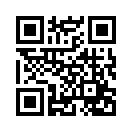FAQ about optical cable?
What happens if fiber optic cable gets too hot?
Fiber optic cables can be damaged by heat. If the temperature of the cable exceeds the manufacturer’s recommended temperature range for storage and operation, the cable jacket will no longer protect the fiber inside which could lead to increased attenuation (signal weakening) and possible breakage of the fiber.
Does cold weather affect fiber optic cable?
Fiber optic cables are designed to operate in a wide range of temperatures. The manufacturer selects jacketing material based on the end-users environmental factors. The manufacturer will specify the storage and operating temperature range for the cable it produces. Storage and/or operating outside of the manufacturer’s temperature specification leads to failure of the optical fiber in terms of the jacket’s ability to protect the fiber and the fiber’s ability to carry a signal.
What happens when fiber optic cable gets too cold?
Just like when a fiber optic cable fails when stored/operated above the maximum temperature recommended by the manufacturer, so too does it fail when stored/operated below the recommended low temperature. Cable jacket failure may result leading to damage to the optical fiber inside the cable. The result is a loss of signal.
What is so special about fiber optic cables?
Optical fibers transmit data via photons (light particles) as opposed to copper cables which do so electronically. Data travels at the speed of light in fiber designed for long-distance networks. Data cannot travel as fast or as far in copper cables. Also, unlike copper cables, fiber optic cables are immune to EMI (Electromagnetic Interference). Fiber optic cables are used extensively throughout our society today because they provide the data speeds and bandwidth necessary to make the internet of things (IOT) possible.

